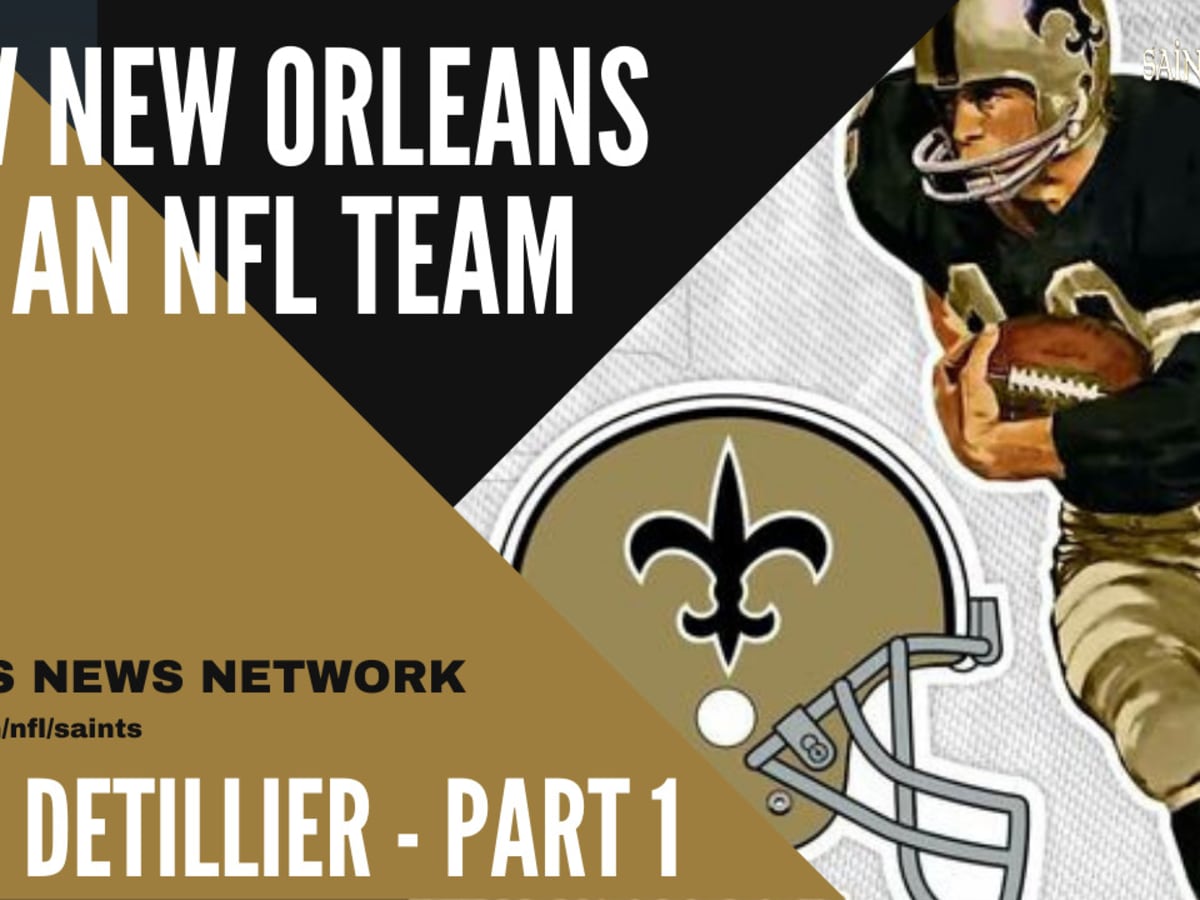
EARLY HISTORY FOR NEW ORLEANS SAINTS: Local sports entrepreneur Dave Dixon and a local civic group had been seeking an NFL franchise for over five years and had hosted record crowds for NFL exhibition games To.....
EARLY HISTORY FOR NEW ORLEANS SAINTS: Local sports entrepreneur Dave Dixon and a local civic group had been seeking an NFL franchise for over five years and had hosted record crowds for NFL exhibition games To…..

### Early History of the New Orleans Saints
#### The Quest for an NFL Franchise
The story of the New Orleans Saints begins in the early 1960s, a time when the National Football League (NFL) was expanding rapidly and cities across America were vying for franchises. Local sports entrepreneur Dave Dixon played a pivotal role in this quest. Alongside a dedicated civic group, Dixon sought to bring professional football to New Orleans, believing that the city could support a franchise. Their efforts were not in vain; by hosting NFL exhibition games, they demonstrated the fervent local interest in the sport, drawing record crowds to these events.
Dixon and his team worked tirelessly, lobbying league officials and marketing the idea of a New Orleans team. They emphasized the city’s rich culture, passionate fanbase, and its strategic location in the South, which could enhance the league’s appeal in that region. After years of persistence, their dreams came to fruition when the NFL awarded New Orleans an expansion franchise in 1966, making the Saints one of two new teams to join the league that year.
#### The Birth of the Saints
The New Orleans Saints officially entered the league in 1967, and their inaugural game took place on September 17 against the Los Angeles Rams. Although the Saints lost that game 27-13, the excitement surrounding the franchise was palpable. The team played its home games at Tulane Stadium, which offered an intimate setting for fans eager to support their new team. Despite a rocky start, with the Saints finishing their inaugural season with a record of 3-11, the enthusiasm among fans remained high.
The Saints struggled during their early years, often finishing at the bottom of their division. The franchise faced challenges both on and off the field, including a lack of consistent leadership and difficulties in player recruitment. However, the loyalty of the New Orleans fanbase began to shine through as they continued to support their team, often packing the stadium and creating an electric atmosphere.
#### The 1970s: Building a Foundation
The 1970s were a formative period for the Saints. The hiring of head coach John North in 1970 brought a sense of stability, and the team began to make strides on the field. The Saints’ first major breakthrough came in 1971 when they drafted running back Chuck Muncie and acquired quarterback Archie Manning, who would become one of the most beloved figures in franchise history. Manning’s arrival sparked hope for fans, and his charismatic playing style earned him a dedicated following.
Despite the continued struggles in the standings, Manning’s presence brought visibility to the franchise. The 1972 season marked a turning point, as the Saints finished with a 5-7 record, their best to that point. However, they remained without a playoff appearance, a frustrating reality for the fanbase.
The mid-1970s saw the Saints draft key players, including wide receiver Wes Chandler and linebacker Rickey Jackson, who would become foundational pieces of the team. Yet, coaching changes and inconsistent performances kept the team from realizing its full potential.
#### The Dome and the “Aints” Era
In 1975, the Saints made a significant move by moving their home games to the newly constructed Louisiana Superdome. This state-of-the-art facility not only provided a more modern venue for fans but also helped enhance the team’s profile. However, the team’s performance did not immediately improve, leading to a period often referred to as the “Aints” era due to fans wearing paper bags over their heads in mockery of the team’s struggles.
Despite the challenges, the community remained loyal. The introduction of the “Who Dat?” chant and other local traditions showcased the unique cultural identity of New Orleans. By the end of the decade, the team had developed a strong, if still flawed, identity, with fans eagerly awaiting a breakthrough.
#### The 1980s: Signs of Progress
The 1980s began with renewed hope as Jim Mora was hired as head coach in 1986. Mora’s leadership brought a disciplined approach that would ultimately set the stage for the team’s success. Under his guidance, the Saints made significant progress, culminating in their first playoff appearance in 1987. That season, the Saints finished with a 12-3 record, a remarkable achievement that brought excitement and optimism to New Orleans.
The playoff game against the Minnesota Vikings marked a historic moment for the franchise, despite ending in a loss. The team’s performance during the regular season and the excitement surrounding the playoffs signaled a shift in the perception of the Saints from perennial underdogs to serious competitors.
#### The 1990s: Establishing a Competitive Identity
The 1990s brought more stability to the franchise. Players like quarterback Bobby Hebert, running back Rueben Mayes, and wide receiver Eric Martin became key figures in the team’s resurgence. The Saints continued to build a competitive roster, and Mora’s coaching style further solidified the team’s identity.
The 1991 season was particularly noteworthy, as the Saints won their first division title and advanced to the playoffs once again. However, the team faced tough competition, and they were eliminated in the first round by the Atlanta Falcons. Still, the playoff appearances during this decade established the Saints as a legitimate force in the NFL.
#### The New Millennium: Hope and Resilience
As the new millennium approached, the Saints faced another transitional phase. The late 1990s and early 2000s saw the team struggling to find consistent success on the field. Despite this, the franchise maintained a strong connection with the community, which only deepened as the city faced various challenges, including the aftermath of Hurricane Katrina in 2005.
The Saints’ early history laid the groundwork for a passionate and resilient fanbase. Through ups and downs, the franchise became an integral part of New Orleans’ culture. From the tireless efforts of Dave Dixon and local leaders to the dedication of the players and fans, the Saints emerged as a symbol of hope and pride for the city.
#### Conclusion
The early history of the New Orleans Saints is a rich tapestry of ambition, struggle, and community spirit. From their inception in the 1960s to the dawn of the new millennium, the franchise navigated through challenges and celebrated milestones that helped shape its identity. The loyalty of the fans, the cultural significance of the team, and the efforts of individuals like Dave Dixon created a legacy that would resonate for years to come. The foundation laid during these early years would ultimately pave the way for future successes, culminating in the team’s historic Super Bowl victory in the 2009 season, a moment that encapsulated the journey of the Saints and their beloved city.






